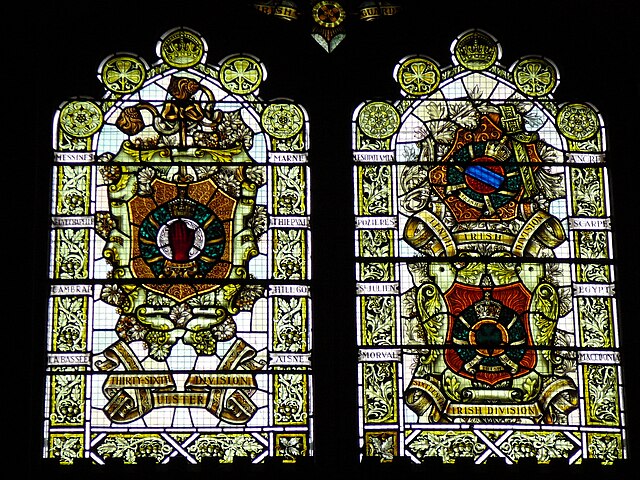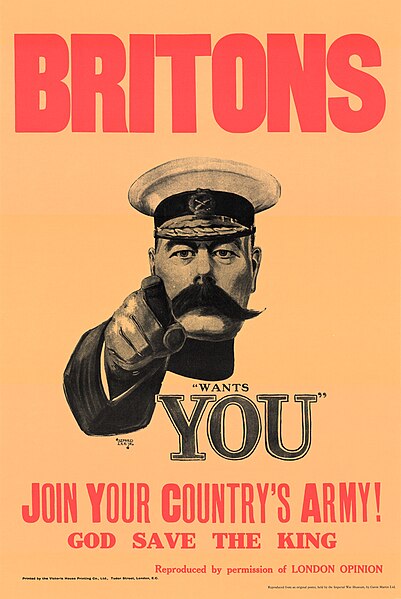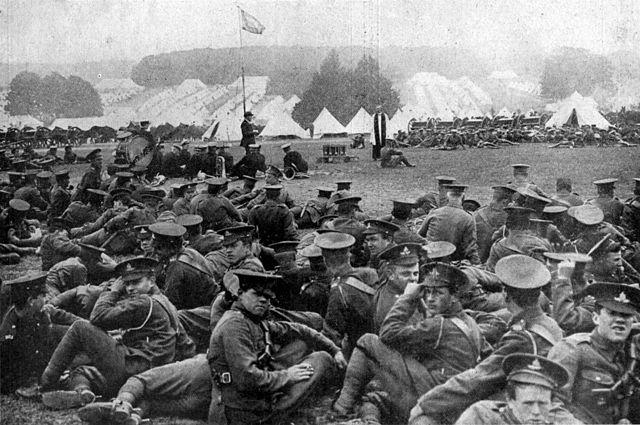The 36th (Ulster) Division was an infantry division of the British Army, part of Lord Kitchener's New Army, formed in September 1914. Originally called the Ulster Division, it was made up of mainly members of the Ulster Volunteer Force, who formed thirteen additional battalions for three existing regiments: the Royal Irish Fusiliers, the Royal Irish Rifles and the Royal Inniskilling Fusiliers. The division served from October 1915 on Western Front as a formation of the British Army during the Great War.
Window in Derry Guildhall commemorating the three Irish divisions which served in the Great War
Mural in East Belfast commemorating the various regiments of the division
Ulster Tower, Thiepval
Men of the Inniskillings posing with captured German equipment in the aftermath of the Battle of Messines
The New Army, often referred to as Kitchener's Army or, disparagingly, as Kitchener's Mob,
was an (initially) all-volunteer portion of the British Army formed in the United Kingdom from 1914 onwards following the outbreak of hostilities in the First World War in late July 1914. It originated on the recommendation of Herbert Kitchener, then the Secretary of State for War to obtain 500,000 volunteers for the Army. Kitchener's original intention was that these men would be formed into units that would be ready to be put into action in mid-1916, but circumstances dictated the use of these troops before then. The first use in a major action of Kitchener's Army units came at the Battle of Loos.
Alfred Leete's recruitment poster for Kitchener's Army.
1914 poster describing terms of enlistment
A Church of England service at the 10th (Irish) Division's camp at Basingstoke in 1915







